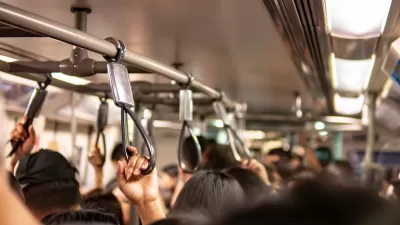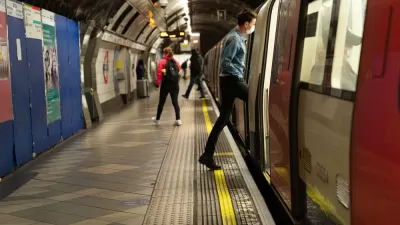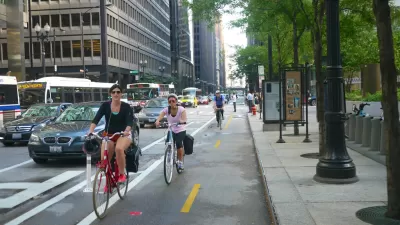A new study released today by the American Public Transportation Association shows that public transportation ridership across the United States increased by 2.31% in 2011 over the previous year, rising to the second highest level since 1957.
In pieces in USA Today and The New York Times, Larry Copeland and Michael Cooper cite job growth, rising gas prices, cost savings, and new technologies that provide better information on arrival and departure times as factors driving the increase.
As Copeland reports, what's even more astonishing is that, "[g]reater use came despite more than eight out of 10 transit systems either cutting service, increasing fares or both in recent years, says Michael Melaniphy, the association's [APTA] president and CEO. 'Can you imagine what ridership growth would have been like if they hadn't had to do those fare increases and service cuts?'"
The report comes as the House and Senate attempt to finalize a new surface transportation reauthorization bill before current legislation expires on March 31. "Republicans in the House of Representatives [had] proposed ending the three-decade practice of putting aside a portion of the nation's highway trust fund to pay for transit, worrying local transit systems and drawing heated opposition from Democrats and quite a few Republicans," writes Cooper.
Noted by both authors was the fact that transit ridership growth was driven by customers in a wide variety of communities, not just in cities. "'It's not just an urban thing,' Melaniphy says. 'When you look at small, rural parts of the country, cities under 100,000, the ridership increase was 5.4%, basically double the national average,'" notes Copeland.
FULL STORY: Public transportation use up across the nation in 2011

Maui's Vacation Rental Debate Turns Ugly
Verbal attacks, misinformation campaigns and fistfights plague a high-stakes debate to convert thousands of vacation rentals into long-term housing.

Planetizen Federal Action Tracker
A weekly monitor of how Trump’s orders and actions are impacting planners and planning in America.

San Francisco Suspends Traffic Calming Amidst Record Deaths
Citing “a challenging fiscal landscape,” the city will cease the program on the heels of 42 traffic deaths, including 24 pedestrians.

Defunct Pittsburgh Power Plant to Become Residential Tower
A decommissioned steam heat plant will be redeveloped into almost 100 affordable housing units.

Trump Prompts Restructuring of Transportation Research Board in “Unprecedented Overreach”
The TRB has eliminated more than half of its committees including those focused on climate, equity, and cities.

Amtrak Rolls Out New Orleans to Alabama “Mardi Gras” Train
The new service will operate morning and evening departures between Mobile and New Orleans.
Urban Design for Planners 1: Software Tools
This six-course series explores essential urban design concepts using open source software and equips planners with the tools they need to participate fully in the urban design process.
Planning for Universal Design
Learn the tools for implementing Universal Design in planning regulations.
Heyer Gruel & Associates PA
JM Goldson LLC
Custer County Colorado
City of Camden Redevelopment Agency
City of Astoria
Transportation Research & Education Center (TREC) at Portland State University
Jefferson Parish Government
Camden Redevelopment Agency
City of Claremont





























